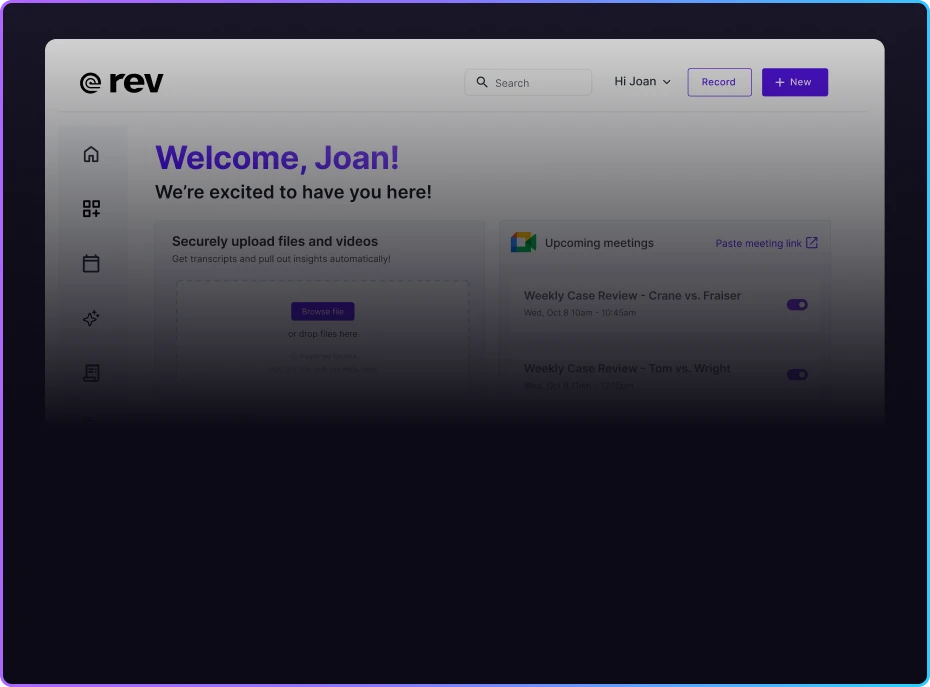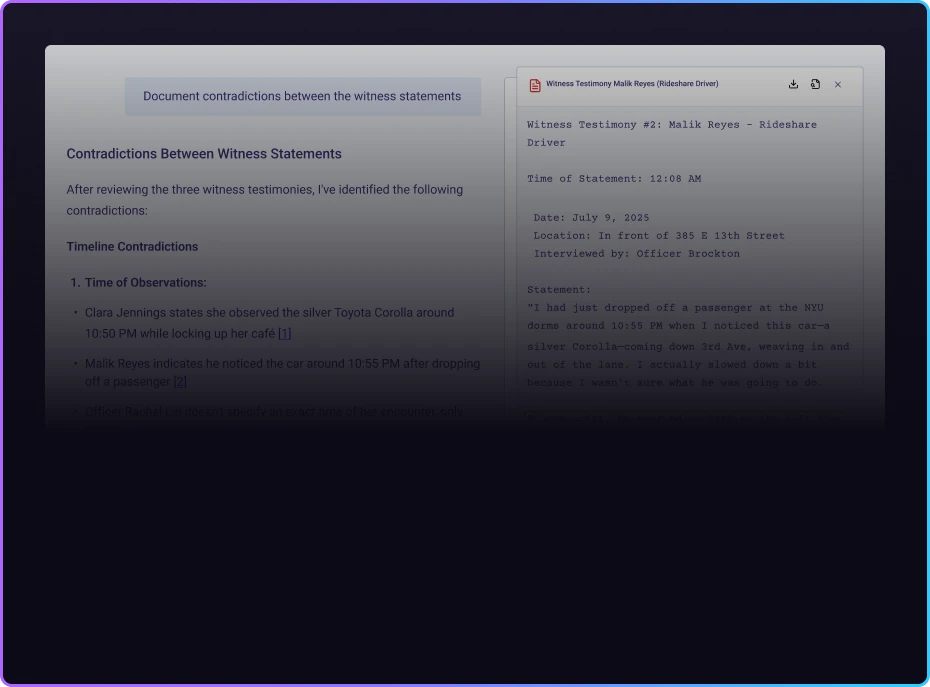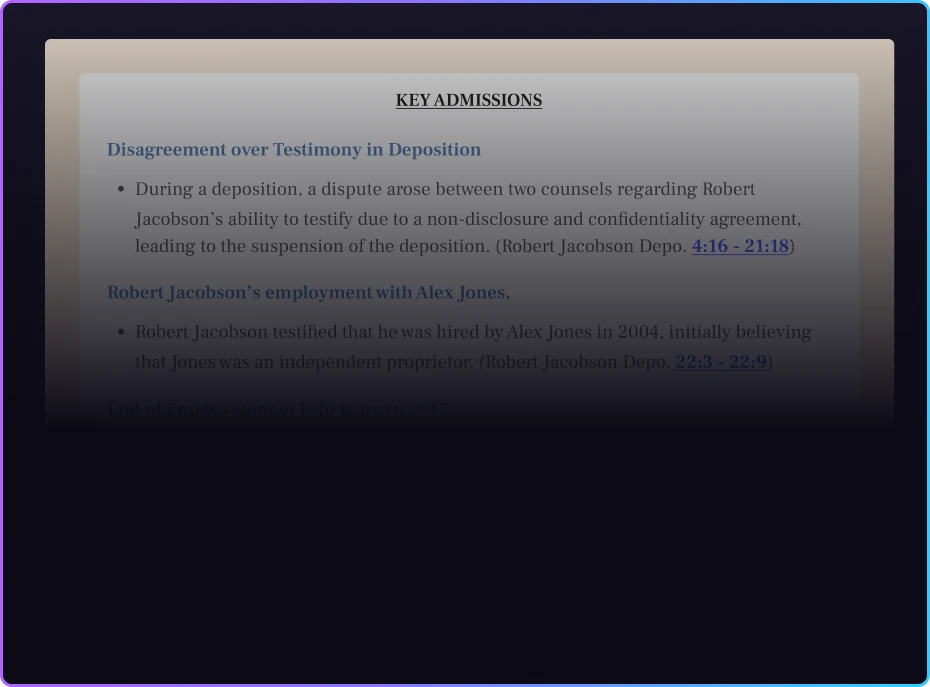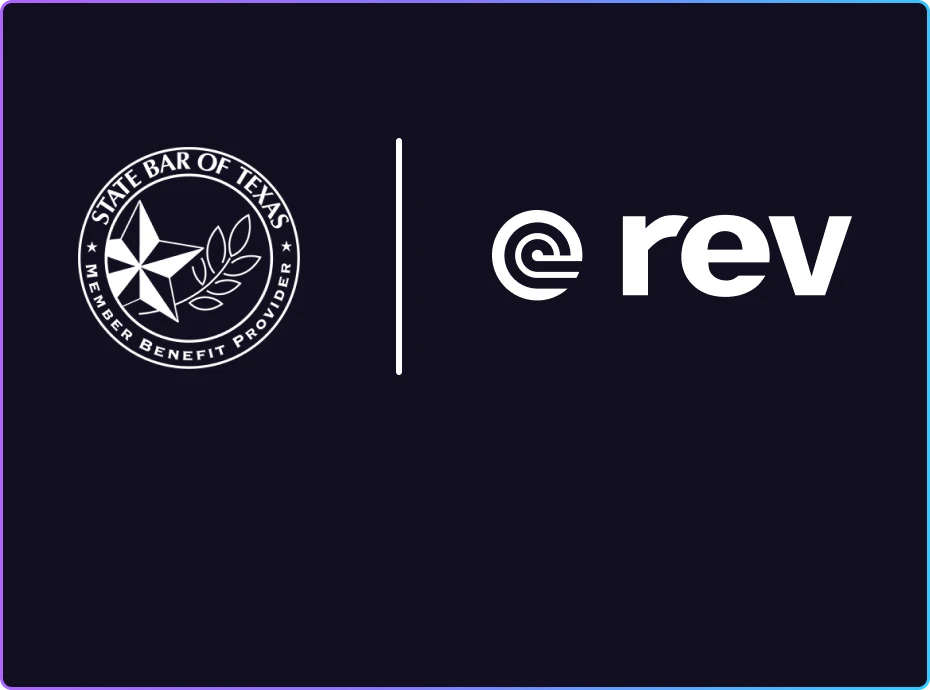Speaker 1 (00:00):
… here. And answer any specific questions on where we are from the process on our side. So you have the Chairwoman of the NTSB. She'll come up here shortly. Just right out there, she'll answer any questions, tell you what's going on. Then we will resume from the city side, answer any questions separately. So we'll ask you guys to separate those two components out with regards to questions. I think Kim is providing you right now, the names of the individuals and confirmation for those of you that don't have that. So we'll give it a minute and the Chairwoman of the NTSB will come in and then we'll take it from there afterwards, okay?
Speaker 2 (00:36):
[inaudible 00:25:15].
Jennifer Homendy (01:27):
Thank you for joining us. I'm Jennifer Homendy and I'm Chair of the National Transportation Safety Board. Our Investigator in Charge for this investigation, we call the Investigator in Charge the IIC, is Leah Reed, that's L-E-A-H, and then it's R-E-E-D. The National Transportation Safety Board is an independent federal agency that's charged by Congress with investigating every civil aviation accident in the United States and significant events in all other modes of transportation. As you know, we're here to investigate yesterday's crash of a Bell 206L-4 helicopter into the Hudson River, near Jersey City, New Jersey.
(02:16)
The helicopter departed the downtown Manhattan Wall Street Heliport in New York at about 14:50 for an air tour flight. The helicopter is owned by Meridian Helicopters, LLC, which is based in Broussard, Louisiana, and operated by New York Helicopter Charter Inc. Before I go on, I want to extend on behalf of the entire NTSB, our deepest condolences to those who lost loved ones in this tragic event. I also want to start by the first responders. This was a tremendous, tremendous effort. And I want to thank specifically, first and foremost the mayor for allowing us to be here in City Hall and do this press conference, and for all the support that you've given us and the team.
(03:18)
I also want to thank the Jersey City Office of Emergency Management, the Jersey City Police Department, Jersey City Fire, Jersey City EMS, Port Authority of New York, and New Jersey Police Department, the New Jersey Park Police, the New Jersey Transit Police Department, Hudson County Office of Emergency Management, the NYPD Special Operations, FDNY Special Operations, New York City Office of Emergency Management, the United States Coast Guard, the Army Corps of Engineers, and so many others that we will continue to mention in our follow-up press briefings.
(04:08)
Now I want to set expectations for this press conference. This crash occurred yesterday at about 3:15 PM, so we're not even 24 hours later. Rightfully, the focus yesterday was on first and foremost victim recovery and then wreckage recovery. Our investigators in the NTSB, we stay out of the way when victim recovery efforts are in process. That is first and foremost, most important. Our investigation can always wait. Once that was done, we had Luke Chiada, who is our chief of our eastern region, who lives right here in New York, on scene as part of the wreckage recovery operations, and those two were the focus for yesterday. The rest of the team began to arrive late last night, including me, and early this morning.
(05:10)
So that means this is the first full day of our investigation, and as you can see, our investigators are out doing some of the work that I'm about to talk about in just a second. But as far as information sharing today, I am not going to share a lot of investigative information. We have a lot of information, but we do not speculate. We need to confirm information. That is a process that takes time. So I will say, I understand that you have a lot of questions and we will attempt to answer them over the coming days.
(05:58)
A little bit about our team and our process, we have 17 people who are here on scene, that includes 10 investigators. They are supported by a minimum of 10 experts back in our headquarters in Washington D.C. The on scene specialists, they are experts and they have the following specialties, operations, they'll focus on the helicopter operator, they'll look at the owner of the helicopter itself, and they will look at pilot qualifications and other information. We have experts on helicopter air worthiness, on structures and on systems. We also have our evidence management team here, as well as our transportation disaster assistance team, which is responsible for working with the family to get them the assistance they need throughout the course of the investigation, not just here on scene, but in the coming days, weeks and months throughout the investigation to the issuance of our final report and sometimes four months and years beyond.
(07:19)
The wreckage exam began this morning. I was there, our team began pulling components and the engine off the wreckage and other components that they would like to more closely examine. Most of their focus was to turn it upright and move the helicopter or the wreckage inside, so that they can begin to do a more comprehensive examination and get to the other side of the wreckage that was against the pavement. We also are aware that there are dive teams. The New York Police Department is still diving for components and pieces of the helicopter that we are still looking to recover. Those include the main rotor, the main transmission, the roof structure and the tail structure. And we appreciate all of their hard work.
(08:25)
And then we have a whole team that is collecting the standard information that we normally gather as part of any investigation, which includes pilot qualifications, log books, history of the helicopter, maintenance logs and so forth. We do have the log books for the pilot. The pilot held a commercial pilot certificate with rotorcraft and instrument ratings. The pilot reported 450 hours of total flight experience on his most recent medical, which was issued on September 20th, 2024. As of March 29th, 2025, the pilot accumulated about 788 hours of total flight time. We still need to calculate flight time in that Bell helicopter, and I'll have more information on that hopefully tomorrow, because he previously was flying a Robinson 44.
(09:26)
Now what we are hoping, is that we are able to get the public to send us any photos or video you may have. Or if you want to contact us, because you believe that you have information that could be pertinent to our investigation, please reach out to us, provide that information to us. We will get in contact with you at the following email address, witness@ntsb.gov. That's witness@ntsb.gov. Now I will take some questions. Again, a reminder, I know there will be questions for very detailed investigative information. I am happy to talk about the team, their qualifications, the process. I am not going to speculate on investigative information. We are very factual and we will provide that in due course. So I will call on you. Please state your name, your affiliation for me.
Matthew Chase (10:37):
Sure. It's Matthew Chase of Newsday. To the extent you're able to share this, is there a preliminary cause? I realize it came back… Early talking, is there a cause preliminarily that you can share with us?
Jennifer Homendy (10:48):
The question is, is there a preliminary cause? We do not have a preliminary cause, that takes time. As I stated, our team focused on helicopter airworthiness and structures and systems, is at the facility with the wreckage doing the wreckage exam, that takes time. Of course, it takes time to also gather information, records that we need to come through. So we do not have that at this time. And just to mention as regarding cause, we will not speculate on cause ever, but we will not be determining any sort of preliminary or probable cause at the scene of an accident. We don't do that.
(11:35)
What we are doing here, is gathering the perishable evidence, the evidence that we need to gather for our investigation when it comes to maintenance log books and other materials. We can look at those materials later on. What we need to do is look at the wreckage now. We need to focus on finding some of the additional components and structures that we're looking for, conduct witness interviews and gather the records that we need. We can review the records later. So that probable cause will not occur for quite some time. Yes, ma'am? And then we'll go here.
Speaker 5 (12:15):
[inaudible 00:12:15]. Can you talk a little bit about the engine? Specifically, what you were saying about what you do with the engine today? And I mean, it seems like an obvious answer, but what you hope to glean from looking at the engine?
Jennifer Homendy (12:27):
So the question was what we were doing with the engine? Nothing that we would not normally do as part of our standard investigation, where we would have records and we'd start separating some of the components that we always look at that standard in our investigation. Of course, we'll have a team that always looks at engines or power plants to evaluate them in standard course of our investigation, so nothing in particular.
Speaker 5 (12:53):
But the engine was still part of the body, or had the engine separated? How did you [inaudible 00:13:00]?
Jennifer Homendy (12:59):
It was in the wreckage and so we separated it from the helicopter so we could take a closer look at it in a more upright position. Yes sir?
Sam Brock (13:14):
Ms. Homendy, thank you for taking the question. Sam Brock, MBC News. Broadly speaking, what do you think, the physical evidence will tell you about what caused this crash? And then also this particular company had a couple of serious incidents in the last several years. Do you think that will be relevant to your investigation?
Jennifer Homendy (13:34):
The question is, what will us looking at as part of this investigation on scene tell us about cause? And what will we be looking at related to the safety history for this particular helicopter company? First of all, we always look at safety history. That's a standard part of all of our investigations. So we'll collect that, not just from the Federal Aviation Administration, that is a party to every single one of our investigations, but we'll also ask those questions in interviews and get other information that will help us get a very broad view and detailed information about the safety history of this particular operator, and also the owner of the helicopter itself. With respect to what will it tell us on scene about our investigation, the evidence right now, everything is on the table. We don't rule anything out. We take a very detailed and comprehensive view, and it's way too early in the investigation. It will be too early on scene. That's much later in the investigation. Yes, ma'am?
Speaker 7 (14:51):
[inaudible 00:14:51]. You said you're looking for videos [inaudible 00:14:55]. What were you able to glean from the initial videos of the fall of [inaudible 00:15:01]?
Jennifer Homendy (15:00):
The question is what have we been able to glean from the videos that are already circulating on social media? Those are very helpful for our investigators certainly, but a lot of those videos are from a very far distance, and so we'll have to look at those a little bit further back at headquarters. But we're hoping to get some additional videos that provide us information. We don't know what people have recorded or taken pictures of that could be helpful in an investigation. We have found in past investigations. And I'm just thinking of one that I went to in Ketchikan, Alaska a mid-air collision, where photos from somebody who was on board one of the airplanes helped us significantly in our investigation. So it can be very key parts of our investigation. So for anyone who didn't hear my previous request, please send us any sort of videos or photos or information you'd like to share with us at witness@ntsb.gov. Yes ma'am?
Speaker 8 (16:11):
I know when you do these investigations, you also come out with recommendations. Knowing the history of these crashes so far, are there any thoughts that you have in terms of regulating this industry even before looking at this particular crash, just based on the amount of crashes that has taken place at these sites, seeing how it happens in general? There's a lot of debate on whether they should operate at all.
Jennifer Homendy (16:38):
So the question is, do we have any sort of concerns or have we issued any sort of safety recommendations in the past about these type of air tour operations? We have, actually, we did. So this particular operator was governed under part 1-35 of the Federal Aviation Regulations. But this particular operation was under part 91, all air tours are. We have issued an entire report on part 91 operations with respect to revenue passengers. We believe in one level of safety strongly, and that may not look like regulation for a major commercial airline, but we do believe that they should be regulated. We have issued recommendations in the past on recorders, crash-resistant recorders. We've issued numerous recommendations on safety management systems.
(17:40)
On particular regulations for part 91, it's too early to say what we would recommend as part of this investigation. However, this is a concern that we've raised for a number of years. Certainly, we raised this after the FlyNYON crash and in a specific report that we have on online at Ntsb.gov focused on part 91, revenue passenger operations. And so I would direct you actually to that report. It was very comprehensive about our recommendations specifically about air tour operators. And if you can't find that, our media relations team can help provide that information, because we did issue a set of recommendations to improve safety in this area.
Speaker 8 (18:31):
And was this operator following those recommendations?
Jennifer Homendy (18:36):
The question is, was this operator complying with those recommendations? Those are recommendations, not regulations, but we would have to look at that, and that will be standard in this investigation. So thank you very much. Sir? And then I'm going to go over here.
Speaker 9 (18:53):
Have you recovered the rotors?
Jennifer Homendy (18:55):
Have we recovered the rotor? We are looking for the main rotor and the tail rotor right now.
Speaker 10 (19:02):
The people up town, Jersey City have been complaining and myself about the helicopters flying low between these buildings up here, these 60, 70 story buildings. And we've asked the FAA up in Connecticut to get them the heck out of here and let them fly down the Hudson River. I'm telling you right now, if something isn't done, there's going to be a disaster where they're going to crash into one of these buildings or crash into the neighborhoods out here. They're annoying and they bother… The people have been asking and asking and asking and nothing has been done.
Jennifer Homendy (19:36):
Thank you. Thank you, sir. There was a comment about the concern about these helicopter operations and thank you very much for sharing that. Appreciate it. Yes?
Speaker 11 (19:50):
Thank you, [inaudible 00:19:51]. I understand this is just the beginning of the investigation, but everybody who has seen these videos are wondering how can it be possible that a rotor can break apart in mid-air in that way, and then at the same time the helicopter to the point that it's inverted? I mean, was speed a factor? What would provoke such a tragedy?
Jennifer Homendy (20:19):
The question is essentially, how did this tragedy happen where a helicopter would break apart in the air? I understand that is a significant concern and a question on everyone's mind. It is going to take time. We need to do a very thorough examination of the wreckage to determine what occurred first and how that occurred. Once we have that, we'll be able to release that to the public.
Speaker 12 (20:45):
Two more questions?
Jennifer Homendy (20:46):
Yes.
Speaker 13 (21:06):
Yeah, [inaudible 00:21:06]. Thank you for taking my question.
Jennifer Homendy (21:06):
Sure.
Speaker 13 (21:07):
[inaudible 00:21:07]. We had some witnesses who did report that they saw a large flock of black birds in the area. One was a gentleman who [inaudible 00:21:06]. When you talk about people sending the videos, but sometimes people can think information may be irrelevant [inaudible 00:21:12] flock of birds flying into the helicopter and [inaudible 00:21:15]. How relevant is that? Have you seen any evidence of birds in the area of, a large of flock of birds [inaudible 00:21:24]?
Jennifer Homendy (21:23):
Yeah, great question, because I think sometimes people are reluctant to reach out to us, because they may not think something is relevant to our investigation. So the question was on reports of a large flock of birds in the area shortly before the crash. We are aware of those reports. We discussed it this morning. It's something we will be looking into. What I will say to the public, if something struck you as different or maybe you paused or it crossed your mind that maybe it's something you would like to share with our investigators, there's no downside. Please, in sharing that information with us, you can be very helpful in providing that investigative information to the NTSB. So again, witness@ntsb.gov, even if you think it's irrelevant, please send it in. Yes sir?
Stephen Nessen (22:24):
Hi, Stephen Nessen, WNYC Radio. You said there are 17 people on site here working on the investigation and 10 in D.C. Is that how many people you would typically have for a helicopter crash investigation? Is that the same number, for example, during the FlyNYON helicopter crash? Or have cuts to the federal government reduced your number of investigators?
Jennifer Homendy (22:45):
So the question is, the 17 investigators here, and 10 who are sporting back home, but the 17 personnel here, 10 of which are investigators, is that typical for an investigation like this? How would it compare to FlyNYON? And would it be less as a result of any sort of cuts to the agency? First of all, let me address the agency. We have not experienced any personnel losses other than typical retirements in our agency. Our agency has been provided by the administration, thank you, an exemption from the Deferred Resignation Program. We got a hiring exemption for several investigative positions within each of our transportation modes, so we can bring our numbers up to help us in our investigation. And that is critical. So we have not suffered in any way.
(23:49)
With respect to comparison on FlyNYON, I don't know how many investigators were here on FlyNYON, certainly our media team can provide that to you. What I will say for our investigations is when an accident occurs, we look at what might be areas we want to look into. How many people can we send based on the rest of our workload? Because we have a pretty heavy workload right now. And that is the decision making that goes into… What expertise do we need and who do we want to send? That is what feeds into that. So it might vary depending on the investigation. Okay. That is the end of questions today. What I will ask is that you monitor X, which is NTSB_Newsroom, and also ntsb.gov, which is our website, which we'll have updates on future press conferences. Thank you so much for your time.
Speaker 1 (25:03):
Okay. If there's any questions to our emergency management or director or the police, we could answer those as well. If not, we'll close it out and say thank you for coming.
Speaker 15 (25:12):
Do you know, was there a black box? I know it's maybe [inaudible 00:25:14] teams question.









